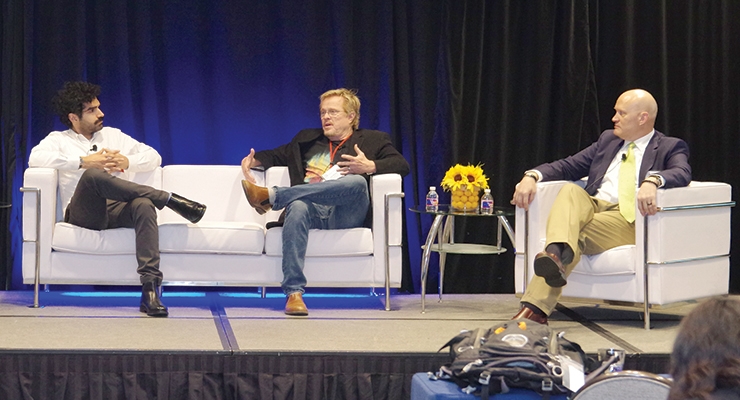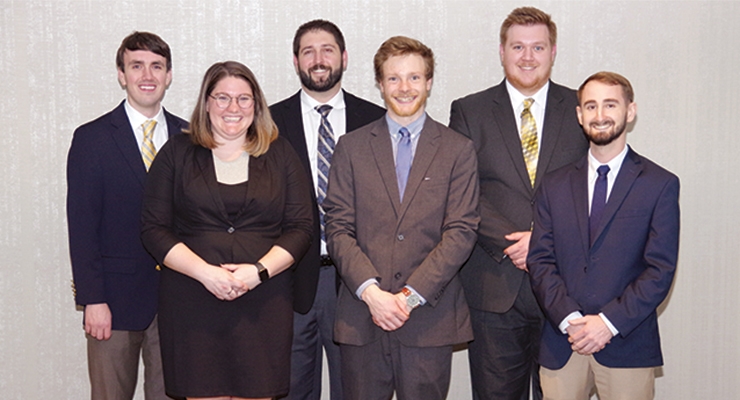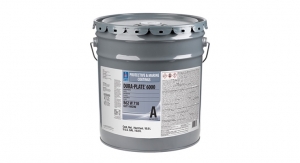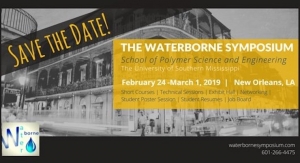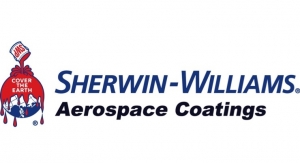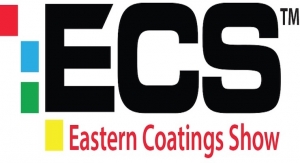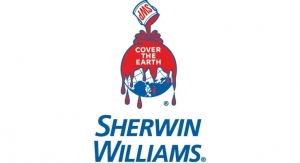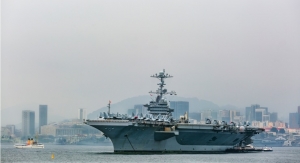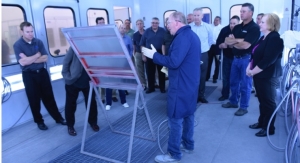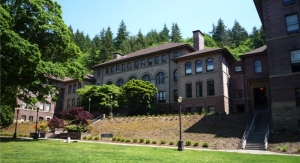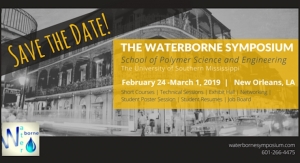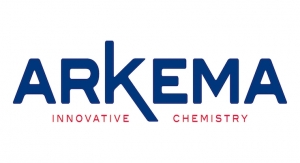Kerry Pianoforte, Editor04.12.19
The School of Polymers and High Performance Materials at the University of Southern Mississippi (USM) held its 46th Annual International Waterborne Symposium Feb. 24-March 1 in New Orleans, Louisiana. The Waterborne Symposium is a technical forum for environmentally friendly coatings technologies. Proceeds from the symposium are used by USM for various elements of academic program development including junior faculty development, graduate student stipends, equipment acquisition and maintenance, and especially scholarships for undergraduate students majoring in Polymer Science. Most of these students enter the coatings or related polymer industries upon graduation. These scholarships are key to USM’s efforts to recruit the highest-achieving students into their Polymer program.
This year’s event had 364 registered attendees and featured 44 talks organized into several sessions related to various aspects of surface coatings: general, corrosion, waterborne, UV, resins, powder coatings, high solids and additives.
Plenary Speaker, Panel Discussion, Keynote Address and Memorial Lecture
The first session commenced with plenary speaker, Faraz Azadi of C3Nano and his presentation, “Advanced Materials to Enable the Flexible Electronics Revolution.”
New coatings, materials and processes are required to enable the next generation of flexible electronics. C3Nano has developed Activegrid – the highest performing flexible conductor.
“Activegrid, a patented technology, employs Nanoglue, a proprietary chemical sintering agent that fuses nanowires (NW) into a nanoscale metallic grid upon coatings and drying,” Azadi said. The fusing is achieved by the selective nucleation of the conductive Nanoglue at the junctions between NWs. The ability to deliver the minimal amount of metal and still achieve low resistance engenders ultra-low haze transparent conduction which has been, or is being, integrated into a variety of consumer electronics applications.”
According to Azadi, the nanoscale nature of Activegrid allows for flexibility and robustness. In his presentation, he compared Activegrid with incumbent transparent conducting technology for display applications as well as other potential replacement solutions. He also discussed other novel technologies that are being developed by C3Nano such as manipulating the color of transparent conductors and advanced extremely durable materials for emerging applications.
Following the plenary lecture, Dale Pritchett, publisher of Coatings World, moderated a panel discussion on “Coatings for Advanced Electronics Applications.”
This year’s panel featured experts across the supply chain. The panel was comprised of Faraz Azadi of C3Nano, Steve McDaniel of Reactive Surfaces and John Payne of Microsoft.
The eighth annual Sidney Lauren Memorial Lecture was given by Weih Lee of Sherwin-Williams, who presented “Thermal Characterization of Solvent-free Epoxy Coatings by Rheology and Kinetics Combined.”
Lee began the lecture by explaining that rheology and kinetics are a pair of indispensable attributes to define thermally reactive paint and coatings.
“In this work, VOCs-free epoxy coating cure paths under heat are characterized via viscoelastic and kinetical behaviors with functional powder coating formulations as examples,” he said. “As a result, what the gel point, the minimal complex viscosity and the shear moduli G’ & G’’ from rheological curves, and as well the maximal cure rate and the peak temperature out of differential scanning calorimetry exothermic profiles essentially mean when it comes to an application-oriented formulation are quantitatively interpreted with respect to dynamic modulus, viscosity and the instant extent of cure… Complete cure description provides strong insights into product developments allowing particular flow and cure properties balanced to boost line performance, applicable to nearly all B-staged thermosetting systems of 100% solids such as conditioned prepregs, adhesives and underfills besides epoxy-based liquid, e-coat, and powder primers or overcoats.”
Technology Showcase
In addition to the main technical program, the Waterborne Symposium also included a three-day Technology Showcase. Now in its 22nd year, the showcase had 27 exhibitors who focused on emerging technologies, new materials, innovative services and equipment.
Student Poster Sessions/Awards
This year the Waterborne Symposium presented the Siltech Best Paper Innovation Award, the SK Mendon Best Student Paper Award and the Eastman Student Poster Awards.
Students presented their research during the Poster Session. This year’s session included 18 student posters.
The Siltech Best Paper Innovation Award was given to Wenjun Wu, Research Fellow/Global Innovation and Technology Leader, Arkema Coating Resins, for her paper, “Confocal Microscopy Techniques for Coatings Research.”
Lina Ghanbari of College of Science and Engineering, Western Washington University won the S.K. Mendon Best Student Paper Award for her presentation, “Influence of Continuous Reactor B-Staging on the Thermomechanical Behavior of a Benzoxazine Matrix.”
Undergraduate winners: First place, Chandler Bell, Azoulay Research Group, USM; second place, Levi Hamernick, Misasi Research Group, Western Washington University; third place, Dane Wedgeworth, Rawlins Research Group, USM.
Graduate winners: First place, Benjamin Almada, Patton Research Group, USM; second place, Travis Holbrook, Storey Research Group, USM and third place, Karina Reynolds, Nazarenko Research Group, USM.
The 2020 Waterborne Symposium will be held February 16-21 at the Sheraton New Orleans.
2020 CALL FOR PAPERS
The School of Polymers and High Performance Materials at The University of Southern Mississippi has issued a call for papers for presentation at the 47th Annual International Waterborne Symposium, February 16-21 in New Orleans. Papers should relate to new and emerging technologies related to materials, processes, production, characterization, application and markets in the field of surface coatings. All papers should be original and represent recent advances in coatings
science and related disciplines. Title, abstract and author’s names (speaker’s name underlined) should be submitted by mail, fax or e-mail no later than Aug. 15 to School of Polymers and High Performance Materials, The University of Southern Mississippi, Box 10063, Hattiesburg, MS 39406-0063; 601-266-4475; Fax: 601- 266-6265; E-mail: waterborne@usm.edu; Web: www.psrc.usm.edu/waterborne.
This year’s event had 364 registered attendees and featured 44 talks organized into several sessions related to various aspects of surface coatings: general, corrosion, waterborne, UV, resins, powder coatings, high solids and additives.
Plenary Speaker, Panel Discussion, Keynote Address and Memorial Lecture
The first session commenced with plenary speaker, Faraz Azadi of C3Nano and his presentation, “Advanced Materials to Enable the Flexible Electronics Revolution.”
New coatings, materials and processes are required to enable the next generation of flexible electronics. C3Nano has developed Activegrid – the highest performing flexible conductor.
“Activegrid, a patented technology, employs Nanoglue, a proprietary chemical sintering agent that fuses nanowires (NW) into a nanoscale metallic grid upon coatings and drying,” Azadi said. The fusing is achieved by the selective nucleation of the conductive Nanoglue at the junctions between NWs. The ability to deliver the minimal amount of metal and still achieve low resistance engenders ultra-low haze transparent conduction which has been, or is being, integrated into a variety of consumer electronics applications.”
According to Azadi, the nanoscale nature of Activegrid allows for flexibility and robustness. In his presentation, he compared Activegrid with incumbent transparent conducting technology for display applications as well as other potential replacement solutions. He also discussed other novel technologies that are being developed by C3Nano such as manipulating the color of transparent conductors and advanced extremely durable materials for emerging applications.
Following the plenary lecture, Dale Pritchett, publisher of Coatings World, moderated a panel discussion on “Coatings for Advanced Electronics Applications.”
This year’s panel featured experts across the supply chain. The panel was comprised of Faraz Azadi of C3Nano, Steve McDaniel of Reactive Surfaces and John Payne of Microsoft.
The eighth annual Sidney Lauren Memorial Lecture was given by Weih Lee of Sherwin-Williams, who presented “Thermal Characterization of Solvent-free Epoxy Coatings by Rheology and Kinetics Combined.”
Lee began the lecture by explaining that rheology and kinetics are a pair of indispensable attributes to define thermally reactive paint and coatings.
“In this work, VOCs-free epoxy coating cure paths under heat are characterized via viscoelastic and kinetical behaviors with functional powder coating formulations as examples,” he said. “As a result, what the gel point, the minimal complex viscosity and the shear moduli G’ & G’’ from rheological curves, and as well the maximal cure rate and the peak temperature out of differential scanning calorimetry exothermic profiles essentially mean when it comes to an application-oriented formulation are quantitatively interpreted with respect to dynamic modulus, viscosity and the instant extent of cure… Complete cure description provides strong insights into product developments allowing particular flow and cure properties balanced to boost line performance, applicable to nearly all B-staged thermosetting systems of 100% solids such as conditioned prepregs, adhesives and underfills besides epoxy-based liquid, e-coat, and powder primers or overcoats.”
Technology Showcase
In addition to the main technical program, the Waterborne Symposium also included a three-day Technology Showcase. Now in its 22nd year, the showcase had 27 exhibitors who focused on emerging technologies, new materials, innovative services and equipment.
Student Poster Sessions/Awards
This year the Waterborne Symposium presented the Siltech Best Paper Innovation Award, the SK Mendon Best Student Paper Award and the Eastman Student Poster Awards.
Students presented their research during the Poster Session. This year’s session included 18 student posters.
The Siltech Best Paper Innovation Award was given to Wenjun Wu, Research Fellow/Global Innovation and Technology Leader, Arkema Coating Resins, for her paper, “Confocal Microscopy Techniques for Coatings Research.”
Lina Ghanbari of College of Science and Engineering, Western Washington University won the S.K. Mendon Best Student Paper Award for her presentation, “Influence of Continuous Reactor B-Staging on the Thermomechanical Behavior of a Benzoxazine Matrix.”
Undergraduate winners: First place, Chandler Bell, Azoulay Research Group, USM; second place, Levi Hamernick, Misasi Research Group, Western Washington University; third place, Dane Wedgeworth, Rawlins Research Group, USM.
Graduate winners: First place, Benjamin Almada, Patton Research Group, USM; second place, Travis Holbrook, Storey Research Group, USM and third place, Karina Reynolds, Nazarenko Research Group, USM.
The 2020 Waterborne Symposium will be held February 16-21 at the Sheraton New Orleans.
2020 CALL FOR PAPERS
The School of Polymers and High Performance Materials at The University of Southern Mississippi has issued a call for papers for presentation at the 47th Annual International Waterborne Symposium, February 16-21 in New Orleans. Papers should relate to new and emerging technologies related to materials, processes, production, characterization, application and markets in the field of surface coatings. All papers should be original and represent recent advances in coatings
science and related disciplines. Title, abstract and author’s names (speaker’s name underlined) should be submitted by mail, fax or e-mail no later than Aug. 15 to School of Polymers and High Performance Materials, The University of Southern Mississippi, Box 10063, Hattiesburg, MS 39406-0063; 601-266-4475; Fax: 601- 266-6265; E-mail: waterborne@usm.edu; Web: www.psrc.usm.edu/waterborne.

